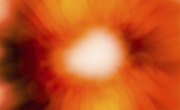The James Webb should help dispel you of the silly notion that we truly understand galactic or universal constants. We do not. That book is rewritten every time we get a closer look.
From the web:

Related
Big Bang Theory for Kids
Updated April 25, 2017
By Chris Deziel
The big bang theory of the origin of the universe is a logical result of the discovery by astronomer Edwin Hubble that the universe is expanding. If the expansion could be reversed, the entire universe would, at some point in time, contract into a single point in space. Scientists have deduced the conditions and temperature of the universe at a time infinitesimally close to this singularity based on observations of the present universe.
The Primordial Singularity
A singularity is a region of space-time in which matter is crushed so closely together that the gravitational laws explained by general relativity break down. In a singularity, the volume of space is zero and its density is infinite. Another way to say this is that the curvature of space-time is infinite. Scientists believe such a singularity exists at the core of a black hole, which occurs when a super-massive sun reaches the end of its life and implodes. General relativity also demands such a singularity must exist at the beginning of an expanding universe.
The Big Bang
The big bang is the instant when the primordial singularity became the universe. Based on observations of distant objects and measurements of the cosmic background radiation, scientists have deduced the temperature at the Planck time, which is 10 million trillion trillion trillionths of a second. At that instant, the temperature was 100 million trillion trillion kelvins (180 million trillion trillion degrees Fahrenheit). The universe underwent a period of accelerated expansion that ended well before a second had elapsed. By this time, it had cooled to a temperature of 100 billion kelvins (180 billion degrees Fahrenheit).
Brought to you by
Sciencing
The First Moments of History
Approximately one second after the big bang, the universe was about 400,000 times as dense as water, and the temperature was 10 billion kelvins. Matter consisted mainly of protons and neutrons. After 13.8 seconds, the temperature had dropped to 3 billion kelvins, and three minutes and 45 seconds later, it had dropped to 1 billion kelvins. At this point, the neutrons and protons began to form helium nuclei. The first atoms didn't form until 700,000 years after the big bang. By then, the temperature had dropped to several thousand kelvins, which was cool enough for protons and electrons to form hydrogen atoms.
Confirming the Theory
Besides Hubble's discovery that the universe is expanding, which led to the development of the big bang theory in the first place, there are two other reasons for accepting the theory. One is that it predicts that the helium formed at the time of the big bang should account for 25 percent of the mass of the universe, which is what astrophysicists observe. The other is that it predicts that the temperature of the cosmic background radiation -- the afterglow of the big bang -- should be 3 degrees above absolute zero, and observations have also confirmed this.
------------------------
I am not familiar with counteractions to this from Webb.





